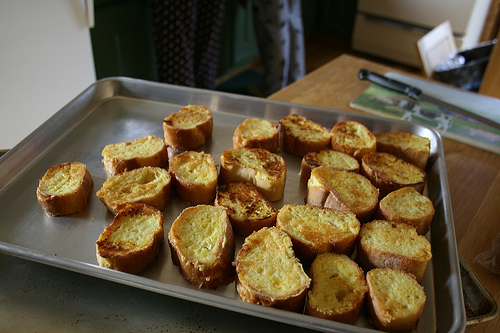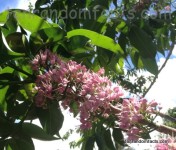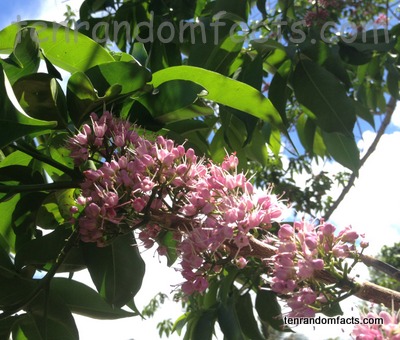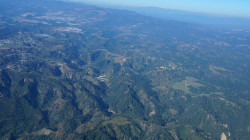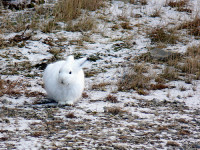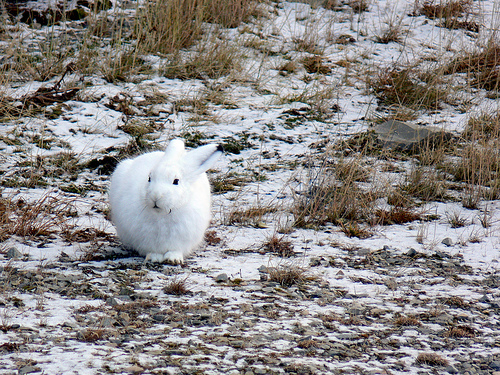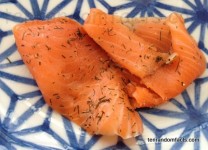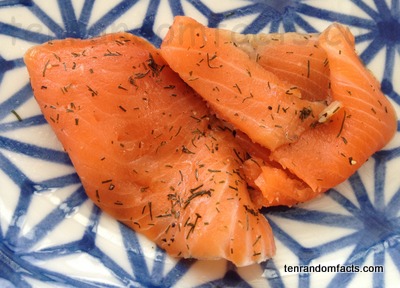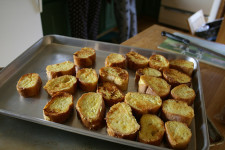
There’s no garlic bread on the menu? Okay, that’s an issue.
- Garlic bread is a bread-based food item typically flavoured with garlic and butter, margarine or oil.
- Crusty bread, such as a baguette, is commonly used to create garlic bread, and the already cooked bread is spread with a combination of butter and garlic, or soaked or drizzled in oil and rubbed in garlic, and occasionally cheeses and herbs are also added.
- Garlic bread is popularly served as an entree or accompaniment to a main meal, especially with Italian food.
- Garlic bread is generally heated in an oven or a frypan, or grilled, typically until toasted lightly.
- Preparation of garlic bread can be undergone in two main ways – firstly, cutting the bread in slices and then adding flavours to each slice, or partially cutting the bread and drizzling the cut area with oils and herbs.
Garlic Bread
Image courtesy of Marco Arment/Flickr
- Garlic bread is derived from the Italian bruschetta, a thickly sliced bread-based dish rubbed with olive oil and garlic gloves, which was originally considered peasant food, and most likely a tradition passed down from the Ancient Romans.
- It is common to find ready-made garlic bread, frozen or refrigerated, sold at supermarkets, so that it is only required to be heated at home.
- Garlic bread was likely brought to America by Italian immigrants, originally as bruschetta, but due to the lack of olive oil and other ingredients, butter was substituted and later adapted to make a different dish.
- The texture of garlic bread can be either crisp or soft, which generally depends on the preparation type, but also length of cooking, and to obtain a soft texture, the prepared bread is generally wrapped in aluminium foil and placed in the oven.
- During preparation, garlic bread can be cut a number of ways – on a diagonal down the length of the baguette; straight across; length-ways from end to end; sliced in half length-ways and then sliced diagonally or straight across; or partially sliced through, straight across or diagonally.
Bibliography:
Bread, 2015, Food Timeline, http://www.foodtimeline.org/foodbreads.html#garlicbread
Garlic Bread, 2016, Wikipedia, https://en.wikipedia.org/wiki/Garlic_bread
Garlic Bread, n.d, ifood.tv, http://ifood.tv/bread/garlic-bread/about
There is No Such Thing as “Garlic Bread”, 2011, The View from my Italian Kitchen, http://ronjamesitaliankitchen.blogspot.com.au/2011/04/theres-no-such-thing-as-garlic-bread.html





